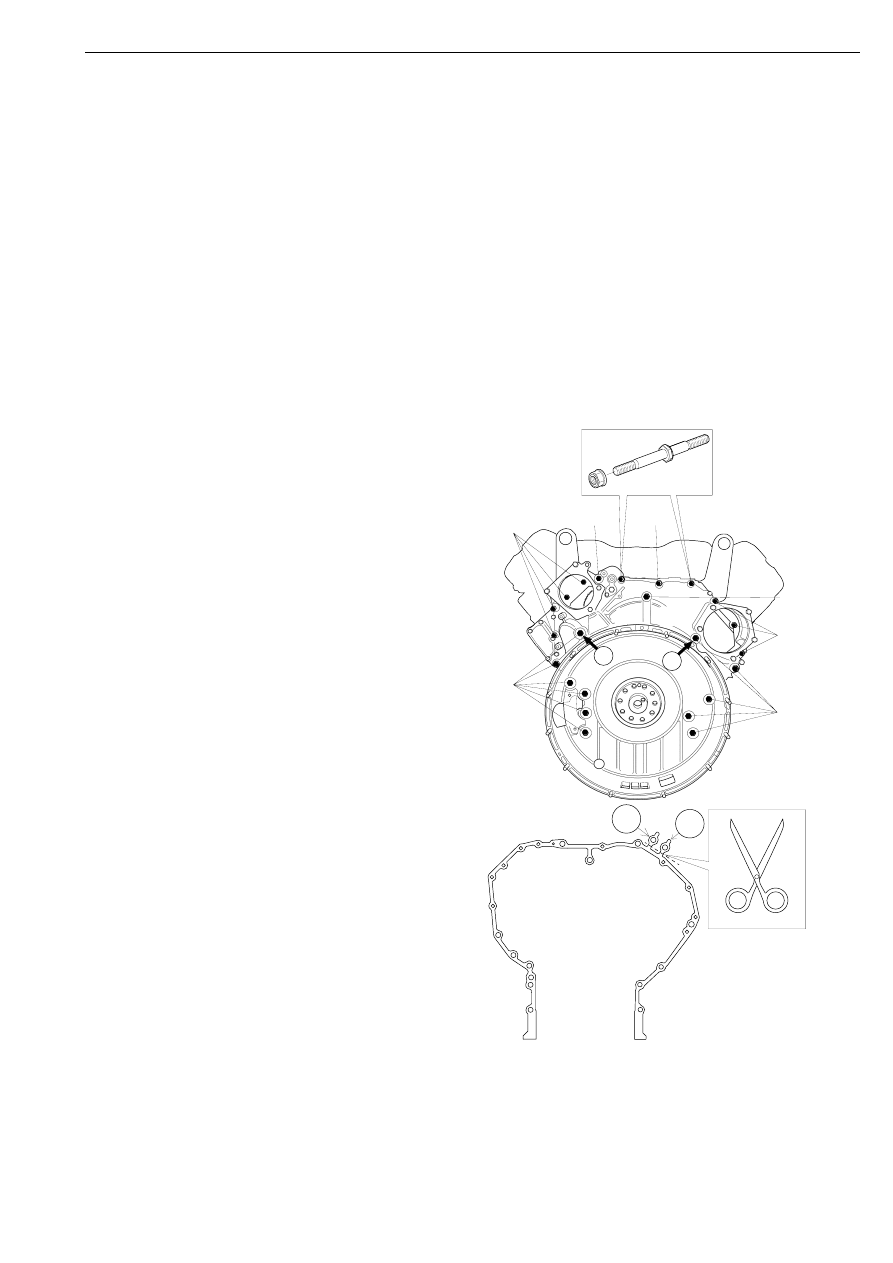содержание .. 13 14 15 16 ..
Scania 16 litre engine. Work Description - part 15

0105w15b.mkr
©
57
Fitting
Tightening torques
Description
1
Clean the sealing surfaces. Carefully
remove any remains of the old gasket.
2
Fit the flywheel housing with a new gasket.
The two appendages, A and B, are to be
removed and used for bolts A and B.
3
Fit the bolts. Torque tighten the M12 bolts
and studs to 92 Nm and the M10 bolts to
50 Nm.
Bolts for flywheel housing
Flange bolt and stud,
M12 : 92 Nm
Flange bolt, M10 : 50 Nm
Nut for turbocharger manifold
92 Nm
Bolts for oil sump
32 Nm
Plug for oil sump
80 Nm
112 295
M12
M10
M12
M12
M10
M10
A
B
A
B
M10
M12
Flywheel housing